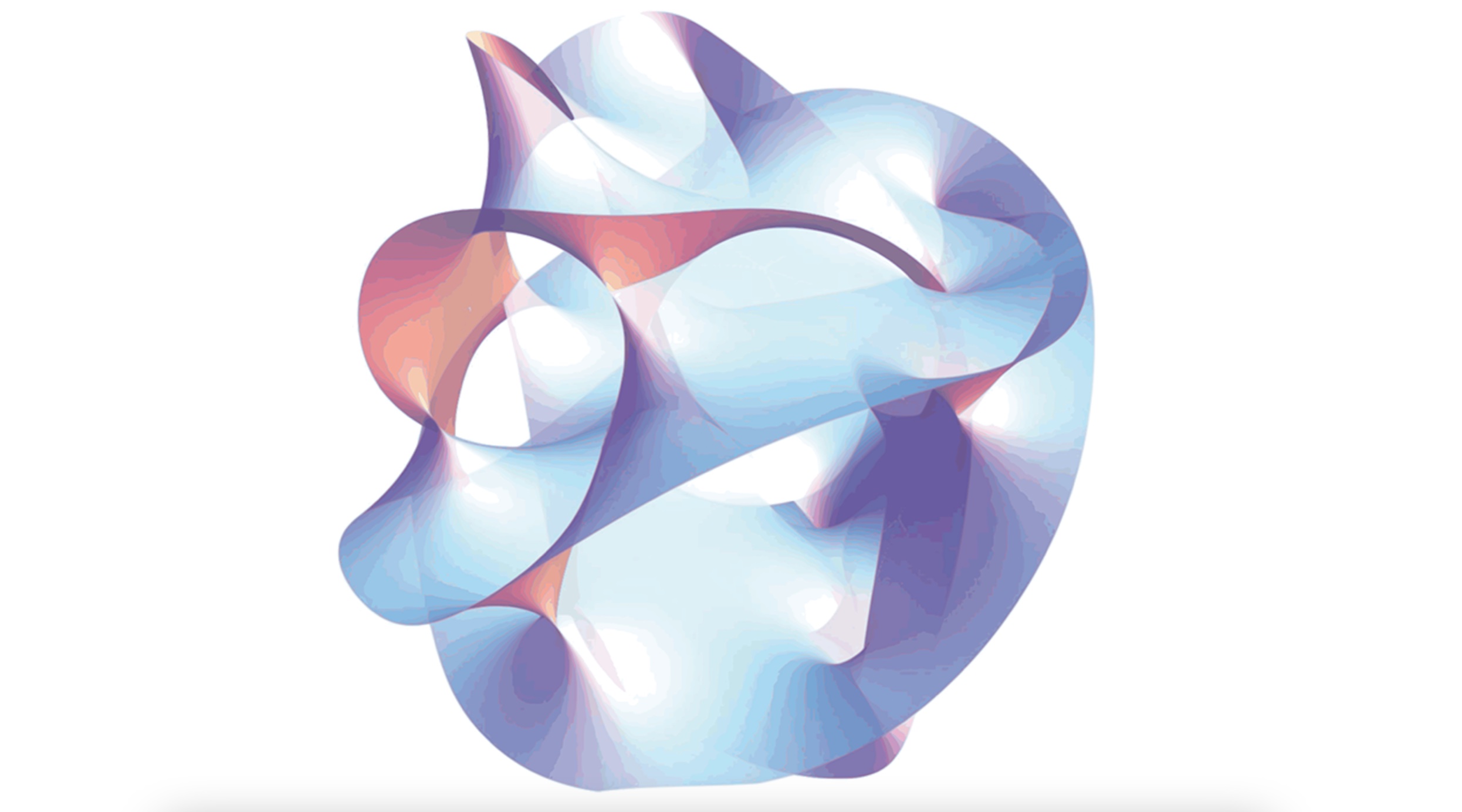Mathematics has long been the basis for advances in physics. Albert Einstein hailed general relativity as “a real triumph” for mathematics in 1915, when he discovered that purely mathematical work, more than a half-century old, perfectly described the fabric of spacetime in his theory of gravity. How could math conceived with no application in mind, he wondered later, prove “so admirably appropriate to the objects of reality?”
Math’s service to physics, now often taken for granted, is rooted in its origins. Mathematics was, after all, invented for surveying, quantifying, and understanding the physical world. In Mesopotamia, the Sumerians developed a counting system, leaving behind clay tablets inscribed with multiplication tables. Their purpose? To tally goods and property. In the intervening millennia, what began as a tool to grease the wheels of government and commerce took on a life of its own. But, while expanding into areas of abstraction so obscure they can only be grasped after years of training, mathematics has continued to underpin the great breakthroughs in physics.
Recently, though, the tables have turned. Now insights and intuitions from physics are unexpectedly leading to breakthroughs in mathematics. After going their own way for much of the 20th century, mathematicians are increasingly turning to the laws and patterns of the natural world for inspiration. Fields stuck for decades are being unstuck. And even philosophers have started to delve into the mystery of why physics is proving “unreasonably effective” in mathematics, as one has boldly declared. That question hinges on a largely unappreciated, perplexing, and profound link between the rules that govern the behavior of the cosmos and the most abstract musings of the human mind.
Why should physics—rooted in making sense of real things in the world like apples and electrons—provide such good leads for solving some of the toughest problems in mathematics, which deals with intangible stuff, like functions and equations?
“Physicists are much less concerned than mathematicians about rigorous proofs,” says Timothy Gowers, a mathematician at the Collège de France and a Fields Medal winner. Sometimes, he says, that “allows physicists to explore mathematical terrain more quickly than mathematicians.” If mathematicians tend to survey—in great depth—small parcels of this landscape, physicists are more likely to skim rapidly over vast tracts of this largely uncharted territory. With this perspective, physicists can happen across new, powerful mathematical concepts and associations, to which mathematicians can return, to try and justify (or disprove) them.
The process of physics inspiring mathematics is, in fact, as old as science itself. The ancient Greek mathematician and inventor Archimedes described how the laws of mechanics had spurred some of his most important mathematical discoveries. Then there’s Isaac Newton, who (alongside his contemporary, the German polymath Gottfried Wilhelm Leibniz) famously developed an entirely new kind of math—calculus—while trying to understand the motion of falling objects.
But in the middle of the 20th century, the flow of new math from physics all but dried up. Neither physicists nor mathematicians were much interested in what was happening on the other side of the fence. In mathematics, an influential set of young French mathematicians called the Bourbaki group sought to make mathematics as precise as possible, rebuilding whole fields from scratch and publishing their collaborative work in an effort—they hoped—to facilitate future discoveries. Physicists, meanwhile, were excitedly developing path-breaking ideas such as the Standard Model—still physicists’ best theory of the atomic and subatomic world. For many of them, math was just a handy tool, and they had no interest in the austere vision of mathematics championed by the Bourbakis.
Yet a reconciliation was afoot, spearheaded by the late British-Lebanese geometer Michael Atiyah. With rare intuition, and a little luck, Atiyah, also a Fields medalist, often alighted on areas that would later be of interest to theoretical physicists.
“In the mid 1970s, he became convinced that theoretical physics was by far the most promising source of new ideas,” Nigel Hitchin, a mathematician and emeritus professor at the University of Oxford who collaborated with Atiyah wrote in 2020 of his former colleague. “From that point on, he became a facilitator of interactions between mathematicians and physicists, attacking mathematical challenges posed by physicists, using physical ideas to prove pure mathematical results, and feeding the physicist community with the parts of modern mathematics he regarded as important but were unfamiliar to them.”

One of Atiyah’s long-term collaborators, who he first met in 1977, was the mathematical physicist Edward Witten. More than 20 years Atiyah’s junior, Witten later became a pioneer of string theory, an idea that posits that tiny one-dimensional vibrating strings are the fundamental building blocks of the universe, rather than the particles of the Standard Model.
Initially hailed as a possible “theory of everything” that would unite quantum theory with Einstein’s theory of gravity, string theory has to date arguably had a bigger impact on some of the most abstract fields of mathematics, such as algebraic geometry and differential topology, than in physics. In these areas, Witten and other string theorists have been able to produce precise conjectures that mathematicians have later proved.
In 1991, for example, physicists Philip Candelas, Xenia de la Ossa, and their colleagues appliedstring theory to a decades-old puzzle in enumerative geometry, an ancient branch of mathematics dedicated to counting the number of solutions to geometrical problems. At its simplest, this asks questions such as “How many lines can pass through two points on a plane?” (One.) Or Apollonius’ famous problem, “How many circles can be drawn that touch (are tangent to) three given circles?” (Eight.)
Candelas and his collaborators were able to use tools from string theory to solve a particularly sticky problem in enumerative geometry: counting the number of certain kinds of curves in Calabi-Yau manifolds, strange six-dimensional shapes that are central to string theory. Their result connected two kinds of geometry, “symplectic” and “complex,” that mathematicians had studied in isolation from each other for decades, thinking they were unrelated. This sort of advance—one that connects two fields that were thought to be unrelated—is considered a “deep” result in math: You can suddenly use tools from one to solve problems in the other, enabling and accelerating advances.
Just a few years later, in 1995, Witten proposed that five different versions of string theory, each requiring 10 dimensions, were all different aspects of a single 11-dimensional conceptualization he called “M-theory.” Though M-theory remains unproven, mapping the correspondences between the different theories has led to startling mathematical discoveries. “It feels like every month string theory is giving new structures to mathematicians in an unprecedented way,” says mathematical physicist Yang-Hui He of the London Institute for Mathematical Sciences.
The sort of math that emerges from studying reality is the sort our brains tend to like.
That string theory is a rich source of such unexpected relationships, or “dualities,” between two mathematical worlds, continues to excite mathematicians today. Physicist He and his collaborator string theorist Federico Carta, also of the London Institute, were studying the simplest type of Calabi-Yau manifold, called a K3 surface, when they stumbled across a relationship between the surface’s “homotopy groups,” which are used to classify shapes in topology, and a symmetry group, called “Matthieu 24.” The pair’s discovery reveals an unanticipated connection between two disparate fields of pure mathematics—topology, the study of shapes, and an area of modern algebra called group theory, which concerns the types of symmetry that objects possess.
Why physics should give rise to such interesting mathematics, says He, is a “deep question.” There are an infinite number of patterns and structures that mathematicians could study, he says. “But the ones which come from reality are ones which we have an intuition about at some level.”
Hitchin agrees. “Mathematical research doesn’t operate in a vacuum,” he says. “You don’t sit down and invent a new theory for its own sake. You need to believe that there is something there to be investigated. New ideas have to condense around some notion of reality, or someone’s notion, maybe.”
This article Why physics is unreasonably good at creating new math is featured on Big Think.

The post “Why physics is unreasonably good at creating new math” by Ananyo Bhattacharya was published on 10/19/2024 by bigthink.com






































Leave a Reply